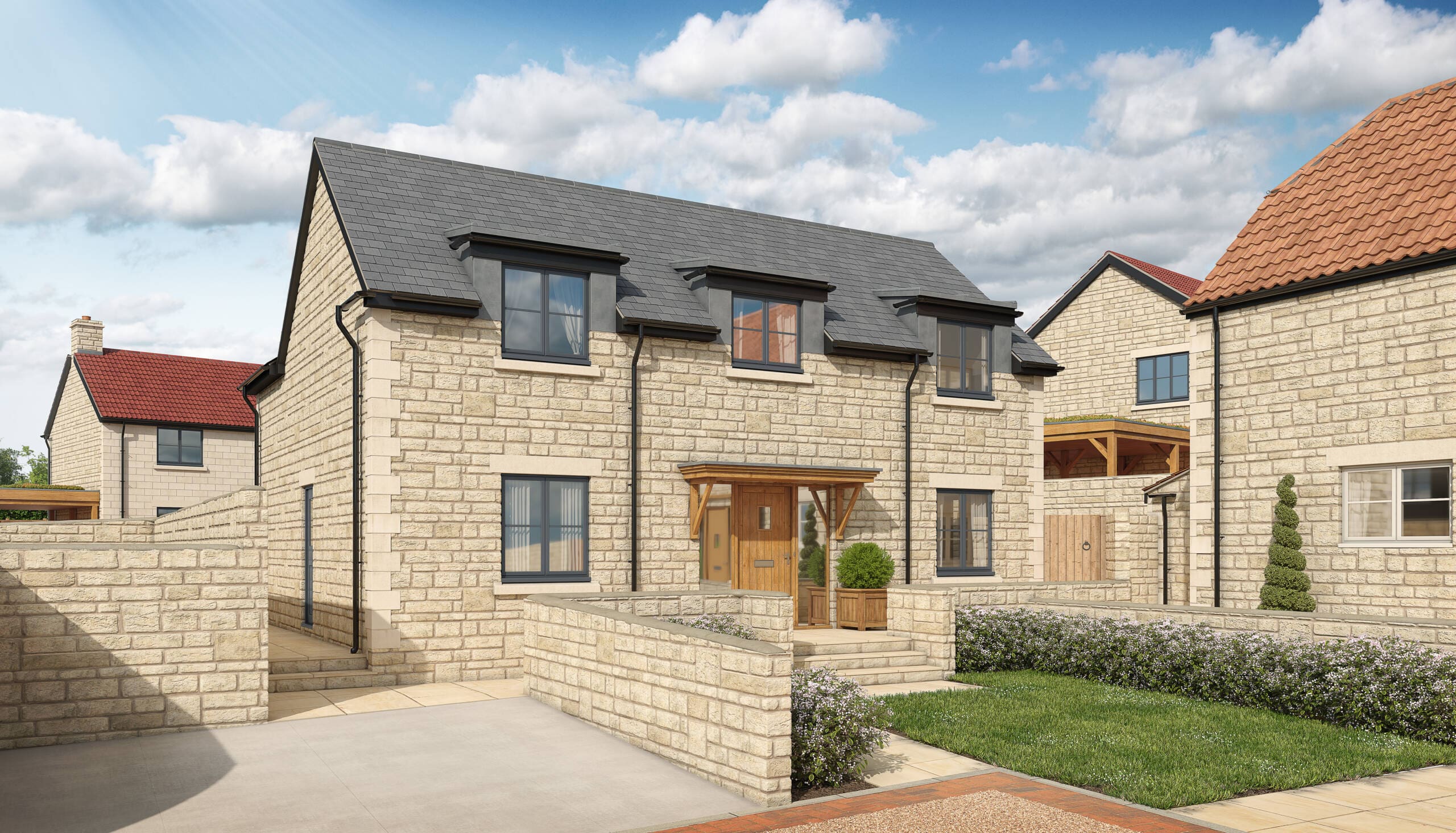Scouring the market and finding a property you love is always an exciting process, but it can be daunting at times. When you come across a historic or listed building, you may be unaware of what the purchase process entails or wonder what it’s like to own or maintain this type of property. Some prospective buyers are even put off because of a building’s listed status, which means they miss out on the opportunity to own a spectacular property that’s perfectly suited to their needs.
Whether you’re actively looking for a listed property or your dream home just happens to be listed, read on and this handy guide will tell you everything you need to know about buying, renovating, and maintaining a listed property.
What is a Listed Building?
A listed building is a structure that has special historical or architectural interest and is protected under the Planning (Listed Buildings and Conservation Areas) Act 1990. As you might imagine, many British listed buildings are centuries old and represent the history and culture of the time in which they were constructed. Although properties built in the 20th century can be listed, the vast majority of listed buildings in the UK were constructed in the 19th century or earlier.
Due to their special significance, buildings are listed so that they can be protected for years to come. This inevitably means that there are some restrictions when it comes to modifying listed properties, which potential owners must be aware of.
How Do You Grade Listed Buildings?
Any property can be nominated to be listed but an independent panel, such as Historic England, determines whether a building fits within their criteria and strategic program. If so, a recommendation is made to the Secretary of State for Digital, Culture, Media and Sport (DCMS) and a final decision is made regarding the building’s status.
If a property is listed, it will be assigned a particular grade. The grade reflects the property and the reason it has been listed, as well as determining what changes can be made to it. Currently, there are three categories of listed buildings:
- Grade i buildings are of great interest.
- Grade ii* buildings are particularly importance and have more than a special interest.
- Grade iii buildings are of special interest.
Somewhat confusingly, the above classifications are often referred to colloquially as grades one, two and three. If you’re going to view or buy a listed property, make sure you verify exactly which grade or classification it falls into!
For listed buildings Scotland, a similar process takes place, although the decision-making body is Historic Environment Scotland and buildings are listed as either category A, B or C, rather than as grades 1, 2 or 3. Similarly, Cadw, also known as the historic environment service of the Welsh Government, make decisions regarding listed buildings Wales, although these buildings are classified with grades too.
Who Can Own Listed Buildings UK?
Theoretically, anyone can own a listed building in the UK. However, most grade I listed buildings are owned by the state, charitable organisations, or commercial entities. When individuals purchase listed buildings as private residences or even as commercial premises, they are more likely to be grade II* or grade II listed buildings.
There are around 400,000 listed properties in England alone and more than 5,000 listed buildings in Bath. Similarly, there are a considerable number of protected properties in Wiltshire, with 342 listed buildings in Bradford on Avon alone.
Buying a Listed Building
The actual process of buying a listed building is no different to purchasing any other type of property, but you should be aware of any restrictions or obligations you’ll encounter once you become the owner of a listed building.
Most owners are aware if their property has listed status, in which case the information will be included in property advertisements. However, if a building has been passed down through generations, owners may be unaware that it’s actually listed. If this applies to you and you want to know, is my building listed, it’s easy to find out.
Similarly, if you’ve got your heart set on owning a listed property, you can check the listed building register or conduct a listed building search to find relevant properties.
Remember – most properties constructed in the 18th century or earlier will be listed, so it’s worth carrying out a listed building map search if you’re viewing historic properties that aren’t advertised as being protected.
Modifying Listed Buildings
Due to their special significance, listed buildings can’t simply be modified in the same way that other properties can. Even if you own the freehold to the building, you won’t have free reign to modify or alter it in any way you choose.
To help you to understand the nuances that come with owning a listed building, we’ve covered some of the most common restrictions below:
Grade II Listed Building Restrictions
If you own a grade II listed building there will be restrictions regarding changes you can make. Prior to making any adjustments, you’ll need to apply for consent from the relevant local authorities. If permission is granted, you will need to pay a listed building consent fee, which is dependent on the scale of the proposed works. Of course, applying for listed building consent can take time, so be sure to factor this into your plans.
When is Listed Building Consent Not Required?
People tend to assume that you only need to obtain consent if you want to make major changes to a listed building. In actual fact, even relatively minor modifications require consent in advance. Making changes to a listed building without consent constitutes a criminal offence and there can be hefty financial consequences.
However, very minor repairs that are carried out with like-for-like materials may not need listed building consent in a grade II listed property. Despite this, it’s always advisable to contact the relevant local authority in advance to determine whether consent will be required.
What Can You Do to a Grade II Listed Building?
The restrictions regarding modifications and alterations are designed to protect listed buildings and our heritage, but this doesn’t mean you can’t make any changes to your property. In fact, some listed buildings may require extensive work in order to keep them in good condition. Although you’ll need to obtain consent prior to beginning any works, you can carry out a range of projects in or on a grade II listed building.
If you want to alter the floorplan by removing internal walls, rebuild features or remove internal features, for example, you’ll certainly need to get consent before doing so. Although proposed modifications that affect the character of the building are unlikely to be approved, replacing features that are in a state of disrepair might be possible.
Due to their historical significance and exceptional style, listed buildings typically have a spectacular visual impact. To make the most of their properties, many owners want to make changes that involve exposing brickwork or timber. However, many people are surprised to learn that even uncovering the property’s innate features is a modification that will require listed building consent.
Planning a Grade II Listed Building Renovation
If you want to renovate a grade II listed building, you’re going to need to apply for consent. Depending on the nature of the project and the proposed changes, you may need to apply for consent for each meaningful modification you want to make.
Although you can submit your own applications for consent, working with experienced contractors, architects, and designers can be advantageous. By seeking advice from professionals who have experience in renovating listed buildings, you can access the bespoke assistance you need when applying for consent. In many cases, these professionals will manage the application process for you, which can prevent unnecessary delays and prove to be more cost-effective in the long-term.
It’s important to be aware that the character and significance of the property should be maintained, regardless of renovations. If you want to purchase a listed building to modernise it, it’s unlikely that your applications for consent are going to be approved. Conversely, if you want to restore or renovate a listed building to bring it back to its former glory, you’re much more likely to get the listed building consent you need to proceed with the project.
If changes have already been made to a listed building, do check that the owner had the appropriate consent to make these modifications. If not, you may be required to restore the property to its former condition, which can be a costly endeavour.
Applying for Grants for Listed Buildings
Before you decide what changes you want to make to a listed building or submit an application for consent, be sure to find out whether any grants are available. When you’re making like-for-like repairs or hiring specialists to carry out work on historical properties, it can increase the cost of renovations and maintenance work.
Due to this, organisations like Historic England do issue some grants to fund repair works on listed buildings. Similarly, if you want to undertake work that would uncover more information about the building or its history, research grants may be available.
Adding Extensions on Grade II Listed Buildings
Extending a property can be a great way to increase the square footage and create more space. As you might expect, a listed building extension will require consent before you can move forward with the project.
Although it’s possible to extend a grade II listed building, proposed extensions are not usually approved if they are likely to overpower the existing structure. In practical terms, this often means that an extension should be lower and smaller than the listed building itself. Similarly, some local authorities are more likely to approve an extension if it is going to be built using the same or similar materials to the original structure and built in the same style.
If you’re purchasing a listed building that has already been extended, be aware that the restrictions and regulations will also apply to the extension. Even if it has been added decades or centuries after the original property was constructed, you will typically need to obtain consent before making any changes or modifications to the extension too.
Can You Install Double Glazing for Listed Buildings?
Double glazing can increase the energy efficiency of a property and limit noise pollution, which is why it’s present on the vast majority of properties in the UK. When it comes to listed buildings, however, don’t assume that you can install double glazing without getting the relevant approval.
Even if the existing windows are in a state of disrepair, consent is still going to be needed before you make any changes. This is because windows tend to have a major impact on the aesthetic and character of a property, so any modifications will need to be carried out with sensitivity to the property’s style.
In general, applications to repair windows with like-for-like materials are more likely to be approved than applications for a complete replacement. However, if repair isn’t possible, replacing windows with similar materials might be a viable option.
In some instances, it may be possible to obtain consent to install double glazing in a grade II listed building. In most cases, however, it’s easy to obtain consent for alternative glazing solutions. Adding secondary glazing and leaving the original windows in situ can be an effective way to achieve the same result as with double glazing, for example.
Decorating a Grade II Listed Building
When you’re decorating a listed building, it’s important to be mindful of the materials used and the visual impact you want to achieve. Although the décor you choose is a matter of personal taste, there may be some restrictions on what is and isn’t permitted.
If you want to enhance the exterior design of a grade II listed property, for example, you may need to use similar materials and/or colours to maintain the character of the building.
When it comes to interior redecoration, you’ll need to determine whether the existing décor contributes to the special significance of the property. If so, it will need to be preserved, rather than replaced. When changes are made to the interior décor of listed buildings, specialist materials may need to be used so that the character of the property remains intact.
Some forms of interior decoration, such as ornate cornicing or timber window frames, are integral to the significance of a property. Due to this, consent will always be required if you want to make changes to them or carry out repairs.
Although this can sound complex, decorating or restoring a listed building can actually be an exciting and rewarding project. By seeking advice from the relevant authorities and working with specialists, you can find innovative ways to unleash the potential a listed building has.
Taking Out Listed Property Insurance
Home insurance is an important way of protecting your investment and giving yourself peace of mind, but a standard homeowner’s policy won’t cover listed properties. Instead, you’ll need to purchase a dedicated listed building home insurance policy.
As the cost of repairs is typically higher on listed properties than on non-listed buildings, home insurance can be slightly more expensive too. However, there are many specialist insurance providers that offer competitive rates. Furthermore, the return you can generate on a listed property, combined with the enjoyment of living in a historic building, certainly makes it a worthwhile investment.
Should You Buy a Listed Building?
Whether you should buy a listed building depends on your personal circumstances and your desire to live in a historic property. While some people are put off by the need to obtain consent prior to making changes to a listed property, others love the character and heritage that a listed building offers.
Before you decide whether a listed building is right for you, it’s vital to do your research and understand exactly what living in a listed property entails. To recap on the most important points, take a look at these handy do’s and don’ts and fast FAQS…
Can you ‘get away with it’?
Cobb Farr wouldn’t encourage you or endorse you trying to ‘get away with it’ as that would be breaking the law. If you do try and then get found out, you risk a criminal record, which will have all sorts of consequences in your life. Quite apart from the cost and difficulties of having to reinstate the original elements. Or the lost sale when you come to sell your house.
The housing market is replete with tales of Planning Officers or nosey neighbours peering through windows and then taking action. Builders delight (in conspiratorial manner) in advising customers to hide their skips or scaffolding away from prying eyes in case a passing Planning Officer or neighbour spots them. You’re taking on a big risk by breaking the law in this way – there are so many ways you could get caught out.
Plus you have to ask yourself the moral question: my house is listed for a reason. Am I denying society as a whole the benefit that adherence to the rules brings? Will I leave a legacy of which I can be proud?
Grade II Listed Building Do’s and Don’ts
If you’re going to buy a grade II listed building, do:
- Verify which grade or classification the building falls into.
- Take out listed building insurance.
- Confirm whether the appropriate consent was obtained before previous work was carried out.
- Talk to the local conservation officer and/or local authority.
- Work with specialist contractors, designers, and decorators.
Conversely, when you’re living in a grade II listed property, don’t:
- Make changes without obtaining consent.
- Remodel or redecorate the interior without applying for consent.
- Assume consent or planning approval won’t matter.
- Underestimate the time and costs involved in maintaining, repairing, or renovating a listed building.
Fast FAQs
Buying a Listed Building with Cobb Farr
If you’re interested in buying a listed building in Bath or you want to know more about purchasing a historic home in Bradford on Avon, contact our team on 01225 333332 or 01225 866111 today.


